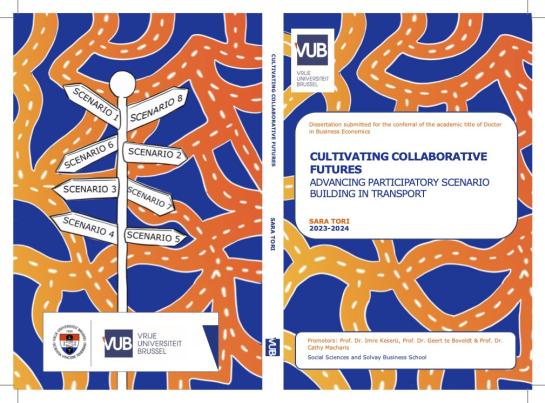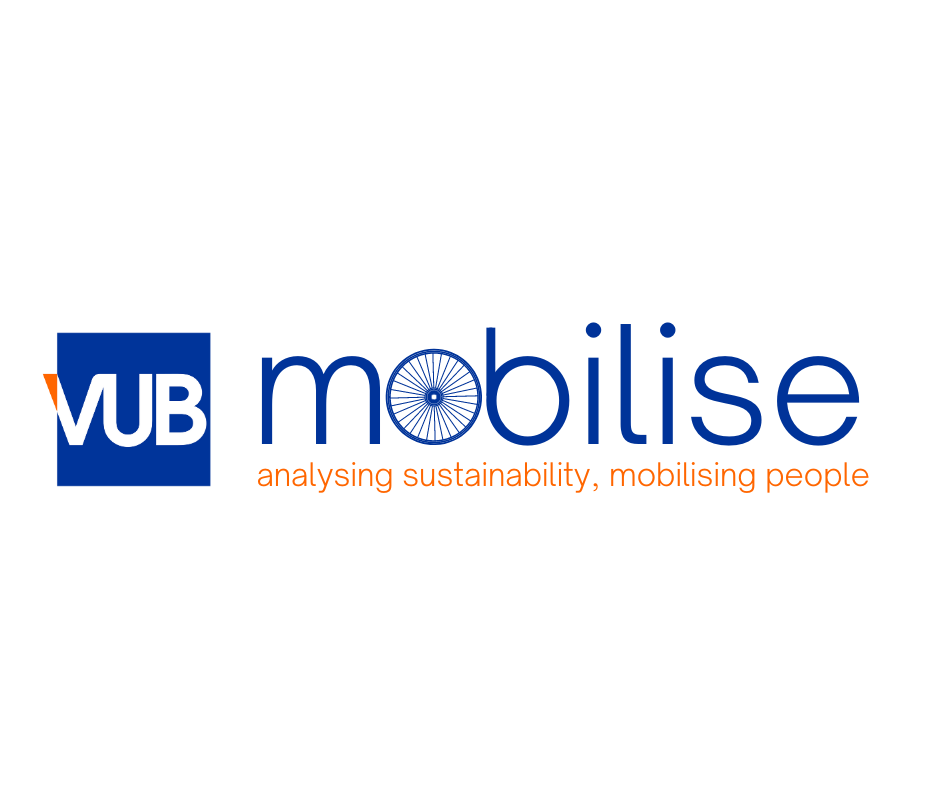
Abstract:
Transitioning mobility systems worldwide towards sustainability, while also increasing their resilience to unforeseen events, requires new methods in transport planning. One emerging complement to traditionaly used forecasts is scenario building. Scenarios, by developing several alternative possible futures instead of a most likely or desired future, aim to increase the resilience of mobility systems to disruptions. This dissertation suggests new ways to develop participatory scenario building methods for transport planning.
In the first part of this research, the impact of one unforeseen event (the COVID-19 pandemic) on public transport in Belgium is investigated. The results show that there was little preparedness among the operators for a pandemic, and the use of foresight and scenario planning within the sector could help build the resilience of public transport systems.
In the second part, a review of practical applications of transport scenario planning in six Western European countries shows that the method is still underused in decision-making. It also emerges that there was little participation in the construction of the scenarios, although participation can help bridge the implementation gap between research and policy making by enabling dialogue. One possible reason for this is that participation in scenario planning can be challenging: quantitative methods for scenario development are often a black box and mathematically demanding, whereas qualitative methods can be perceived as lacking a logical and structural underpinning. Alternatively, mixed-methods approaches can then be used in a participatory setting. To this end, this dissertation develops a new mixed-methods approach based on cross-impact balance analysis and scenario workshops. Cross-impact balance analysis provides the structure of the scenario storylines, ensuring that they are not internally contradictory. These raw scenarios are then creatively elaborated in scenario writing workshops. This new method is tested to develop scenarios for urban mobility in 2030 in five different cities (Padova, Tel Aviv, Budapest, Valencia and Kalisz), and then further elaborated to increase the level of participation to develop future mobility scenarios in Brussels in 2050.
Lastly, this dissertation shows a scenario building exercise in a different geographical context, namely a rural village in Flanders, Belgium, since scenario building often focuses on urban areas. However, rural areas are more car-dependent and could benefit from the use of alternative transport planning methods. In the village of Oetingen, wild cards are used to disrupt the visions of the inhabitants. This is done because, according to literature, linear thinking, i.e. thinking that does not consider low-probability events, often still dominates in scenario development. This decreases the usefulness of the resulting scenarios for policy making, by not taking into account unforeseen events. In the research done in the village, all children of the primary school, in addition to adult citizens, are involved in the visioning process, to understand how their visions for mobility in the future compare. Through this exercise, it appeared that the wild cards developed by non-expert citizens were not more outside-the-box than the ones developed by experts. As a result, the fact that the inclusion of non-expert stakeholders leads to more outside-the-box and creative scenario could not be confirmed. However, it appeared that the visions developed by the participating children were outside-the-box, and that their inclusion in the scenario development process is feasible. Participation by children, as the future generation, in scenario exercises could therefore be further explored to develop more diverse transport scenarios.
Through the empirical research presented in the different chapters of this dissertation, this study contributes to the body of knowledge on mixed-methods and qualitative transport scenarios, and provide ways in which to develop mobility scenarios in a participatory manner. In doing so, it aims to facilitate the uptake of scenarios in transport planning, to allow for more flexibility and resilience to unforeseen events.
